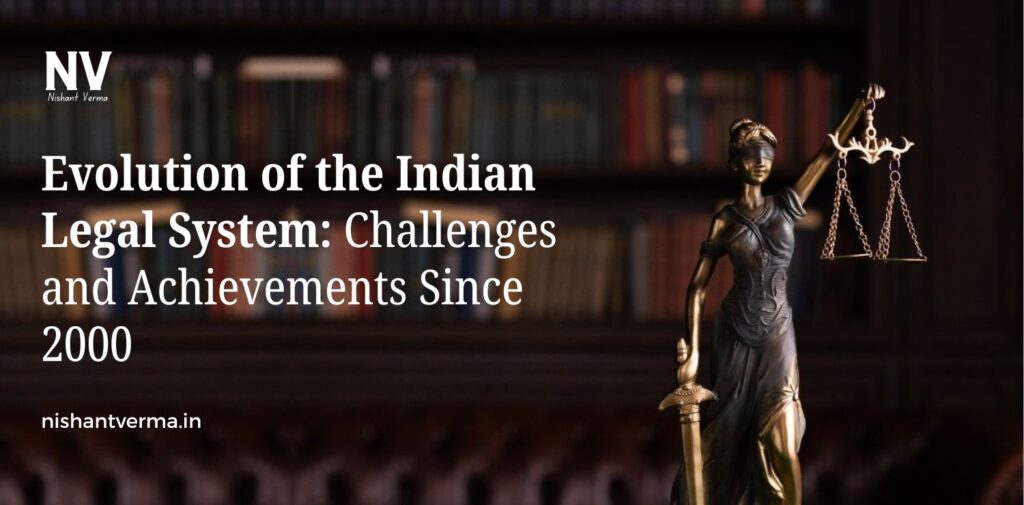India’s legal system has undergone significant changes since the turn of the century. The country’s judicial framework, while deeply rooted in its colonial past, has adapted to the evolving demands of modern society. From legislative reforms to judicial activism, the legal system has seen both challenges and achievements. This article takes a closer look at how the Indian legal system has evolved since 2000, highlighting the key reforms, issues faced, and milestones achieved.
Post-2000 Legal Reforms and Innovations
The Indian legal system has seen a number of important reforms since 2000, aimed at improving efficiency, accessibility, and transparency. One of the most significant reforms was the introduction of the Right to Information (RTI) Act in 2005. This landmark legislation empowered citizens by giving them the right to access information from public authorities. The RTI Act brought about a cultural shift, encouraging transparency in government functioning and accountability in public administration.
The Judicial Reforms of the early 2000s were also aimed at making the system more accessible and efficient. A key development was the introduction of the National Judicial Appointments Commission (NJAC), which sought to make the process of judicial appointments more transparent. However, this was met with resistance and was eventually struck down by the Supreme Court in 2015, restoring the Collegium system for appointing judges.
Another key change in recent years has been the Digitization of the Judiciary. The Indian judiciary began embracing technology to speed up proceedings, reduce paperwork, and enhance transparency. The e-courts project, launched in phases, aimed at improving the efficiency of court management, reducing case backlogs, and increasing public access to court documents.

Challenges in the Legal System
Despite these reforms, the Indian legal system faces several persistent challenges. One of the most pressing issues is the large backlog of cases. India’s courts are burdened with millions of pending cases, resulting in significant delays in the delivery of justice. A study from the Law Ministry in 2020 found that there were over 3.5 crore pending cases in the Indian judicial system. This backlog affects not only the common man’s access to justice but also the credibility of the entire judicial system.
Another major issue is judicial delays and pendency of cases. Court proceedings in India can take years, and sometimes decades, to reach a resolution. This problem is further exacerbated by an insufficient number of judges, outdated court infrastructure, and inadequate funding. Despite numerous efforts to speed up the judicial process, such as the introduction of fast-track courts for sensitive cases, the delays remain a critical concern.
Access to Justice: A Right for All?
Access to justice remains an ongoing issue in India, particularly for marginalized communities. Despite the Indian Constitution guaranteeing equality before the law, social, economic, and geographical barriers often prevent certain sections of society from accessing legal recourse. In rural areas, especially, people are often unaware of their legal rights or unable to afford legal services. The legal aid system in India has been put in place to address this issue, but its implementation remains weak in many areas.
The National Legal Services Authority (NALSA), established in 1995, aims to provide free legal services to the poor and disadvantaged. However, despite the efforts of NALSA and other organizations, the lack of legal awareness and a shortage of affordable legal services continue to prevent many individuals from utilizing these resources.
The rise of alternative dispute resolution mechanisms, such as mediation and arbitration, has provided some relief to those seeking quicker resolutions. However, these alternatives are still not widespread or easily accessible for the common man. The Lok Adalats, which are forums for the settlement of disputes outside of traditional court systems, have been an essential part of India’s efforts to provide accessible justice.

Judicial Activism and the Role of the Supreme Court
Since 2000, the Supreme Court of India has played a key role in shaping the nation’s legal landscape through its active interpretation of the Constitution. Judicial activism in India refers to the process through which the judiciary has taken a more proactive role in safeguarding the rights of individuals, often filling gaps where the legislature or executive have failed to act.
The Supreme Court has, on several occasions, expanded the scope of fundamental rights and directed the government to implement necessary reforms. One such example is the right to privacy case in 2017, where the Court ruled that privacy is a fundamental right under the Constitution. Similarly, the Court’s intervention in matters such as gender equality, environmental protection, and anti-corruption laws has resulted in significant changes.
The Court’s stance on issues such as same-sex marriage, freedom of expression, and public interest litigation (PIL) has often been revolutionary, pushing for progressive reforms in a conservative society. Judicial activism has allowed the Indian legal system to address the needs of a rapidly evolving society, though it has also led to debates regarding the separation of powers and the judiciary’s role in policymaking.
Legal Education and Awareness
Another important area of development in India’s legal system has been legal education. Over the past two decades, the number of law schools in India has increased dramatically, and many of them have gained international recognition. Institutions like the National Law Universities (NLUs) have played a pivotal role in producing highly qualified legal professionals. The rise of online legal education platforms has further democratized access to legal knowledge, making it easier for students from diverse backgrounds to pursue legal studies.
In addition to formal education, there has been a growing movement to improve legal awareness among the general public. Numerous non-governmental organizations (NGOs) and civil society groups have been working to educate people about their rights and the legal avenues available to them. In a country with a population of over 1.3 billion, ensuring that citizens understand their legal rights and duties is an ongoing challenge but remains vital for a thriving democracy.

The Road Ahead: Striving for a Fair and Efficient System
As India moves further into the 21st century, the legal system continues to face both challenges and opportunities. The demand for justice is growing, and with it comes the need for a more efficient, accessible, and fair system. The use of technology will play a critical role in shaping the future of India’s legal system. The expansion of e-courts, online filing systems, and artificial intelligence for legal research are just some of the ways in which technology can help speed up the delivery of justice.
Reforms in judicial appointments, infrastructure development, and the improving of legal aid systems are critical steps towards creating a more effective legal system. Strengthening the capacity of the judicial system, increasing the number of judges, and reducing the backlog of cases will be crucial to ensuring timely justice for all.
India also needs to work on bridging the gap in legal access, especially for those from marginalized communities, and create a more inclusive legal system. Alternative dispute resolution mechanisms should be expanded, and the legal profession should continue to evolve in a manner that is more responsive to the needs of the public.
Conclusion: Indian Legal System
In conclusion, the evolution of India’s legal system since 2000 has seen substantial growth in terms of legislative reforms, judicial activism, and legal education. However, significant challenges remain, including delays, backlog of cases, and unequal access to justice. By continuing to embrace reforms and technology, and focusing on inclusion and accessibility, India’s legal system can better serve the needs of its diverse population.




